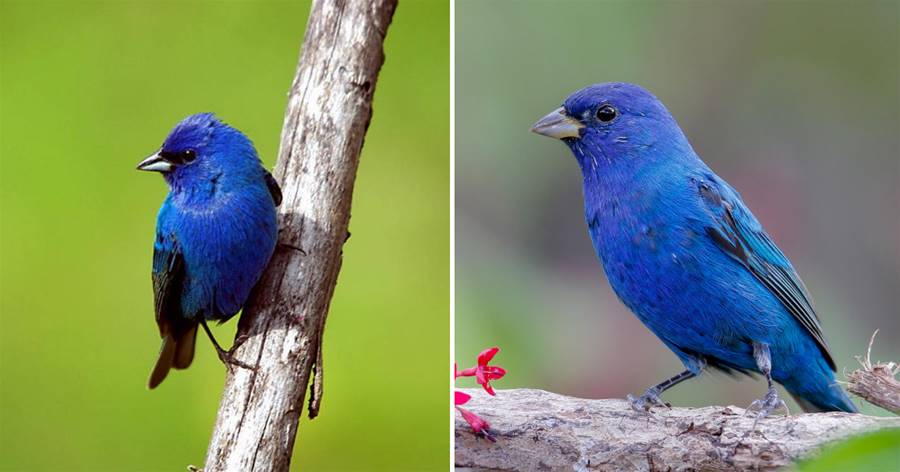

The Indigo Bunting’s whistling song and flash of blue wings is like a breath of fresh air on a hot summer day. This omnivorous songbird has captured the hearts of many by way of its bright blue color. For the birder in the East or Southwest, this is a great species to keep an eye out for – and even consider feeding in your backyard! Continue reading to learn 12 facts Indigo Buntings.
Indigo Buntings split their time between North and Central America. Specifically, they spend spring and summer in the eastern and southwestern United States, then fall and winter in Central America and some islands of the Caribbean.
In the United States, they have traditionally been found from Maine south to Florida and west to Texas and North Dakota. Their range has recently expanded into the Southwest and the Four Corners region.
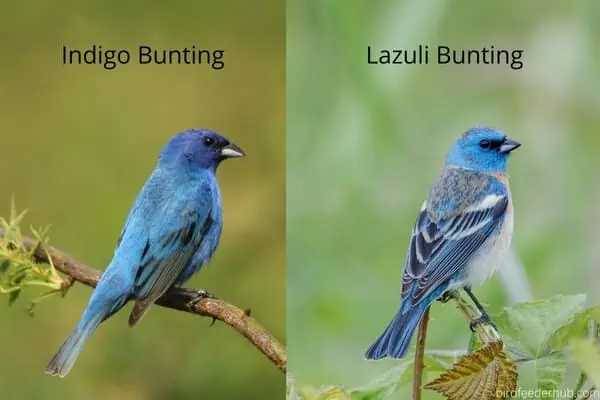
In areas of the western Great Plains, the Indigo Bunting can be found alongside another blue bird, the Lazuli Bunting. While they often defend their territories against each other, they also may share songs and even interbreed to form hybrids.

It’s easy to tell male and female Indigo Buntings apart. Throughout the year, they are differently colored.
Females are dusty chestnut brown year-round. Some may have diffuse light blue stripes on their wings too.
During the breeding season, males are a bright cobalt blue. Their heads are slightly darker than the rest of them, although some may have darker blue wingtips. They are sometimes referred to as the “blue canary”.
At other times of the year, the male has more brown feathers. His tail, wings, and part of his neck may be brown. However, the blue feathers of his head and back are still visible.
Even though these songbirds haven’t taken well to human suburban development, they love the grassy corridors that roads, railroad tracks, and power lines make as they cut through densely forested areas.
Indigo Buntings thrive on seeds from grasses that grow in these open spaces. They balance on the stalks of wild grasses, searching for their next meal.

After mating, the male Indigo Bunting doesn’t contribute much to his mate’s hefty job of building the nest, incubating the eggs, and feeding the growing chicks.
In some situations, however, the pair might mate again when their brood is about to fledge the nest. While the female goes to another part of her mate’s territory to build a second nest, the father of the fledging chicks might take over the feeding role.

They adapt according to what food is available. In the winter, seeds are usually present from the ripening and harvesting of autumn. Since many live near abandoned agricultural land, they take advantage of successional plants that may seed or fruit and leave remnants for the winter.
In the spring and summer, Indigo Buntings feast on insects. The first food the mother feeds her chicks after hatching is insects.
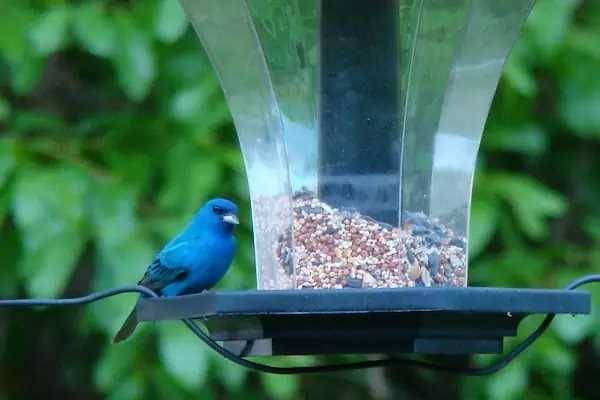
It’s more difficult to attract them to your bird feeder because they are more shy than other birds. If you have a large yard with a low, brushy area with grasses and shrubs, consider placing a feeder at the edge. Indigo buntings might make an appearance in such a comfortable location.
Some birds are gregarious throughout the year. Not Indigo Buntings! During the summer months, they prefer to forage for insects alone.

The breeding season in the spring and summer is the only time that males are totally blue. In the non-breeding season, he molts to a combination of blue and brown that is still visually stunning.
You’re unlikely to see him in this molt, however. Indigo Buntings migrate south for the winter and are only present in the United States during the breeding season.
Tiny though they may be, these small birds are able to fly hundreds of miles thanks to the help of an internal clock that enables them to determine their location in space.
The birds migrate at night so they can see the stars overhead when they fly. To chart a course, they fixate on a specific star. They fly at a specific angle between the star and the earth. Geometrically, this points them in a straight line that allows them to accurately arrive at their destination.
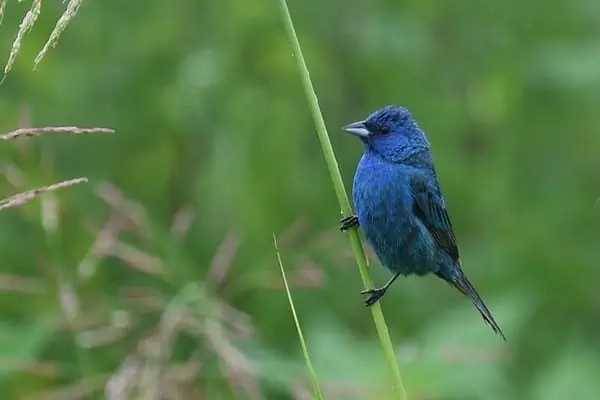
It may surprise you to learn that the male Indigo Bunting’s vibrant are not, in fact, pigmented at all. His feathers appear blue for the same reason that the sky appears blue – the reflection of light. Structures within the feather reflect only the blue light.
Male buntings’ songs can last for longer than they do – up to 20 years! Males learn their songs from other males in the area. You can tell it’s an Indigo Bunting according to the presence of double notes.
Watch for males in the middle of summer. They like to perch in plain sight where they are visible to other males, females, and any potential threats.
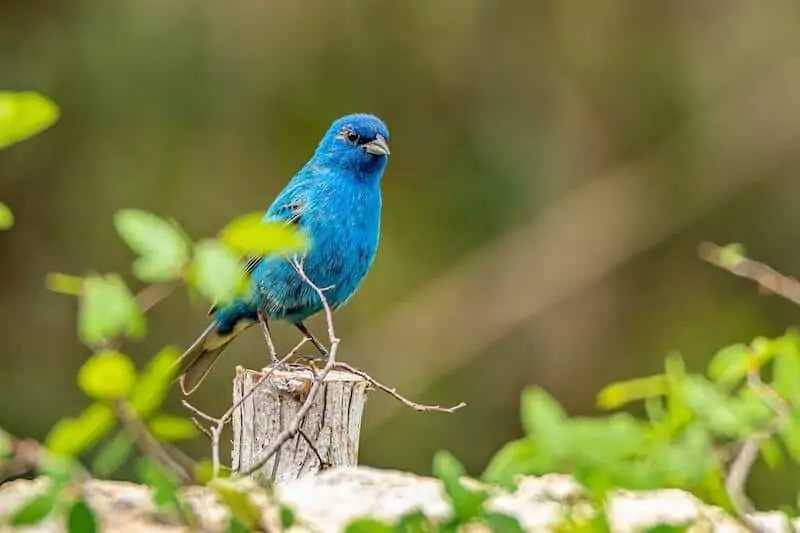
Like their colorful cousin the , the Indigo Bunting is also at risk of being illegally captured in Central and South America. People who capture the birds sell them to pet stores. People prize them because of their vibrant blue color.